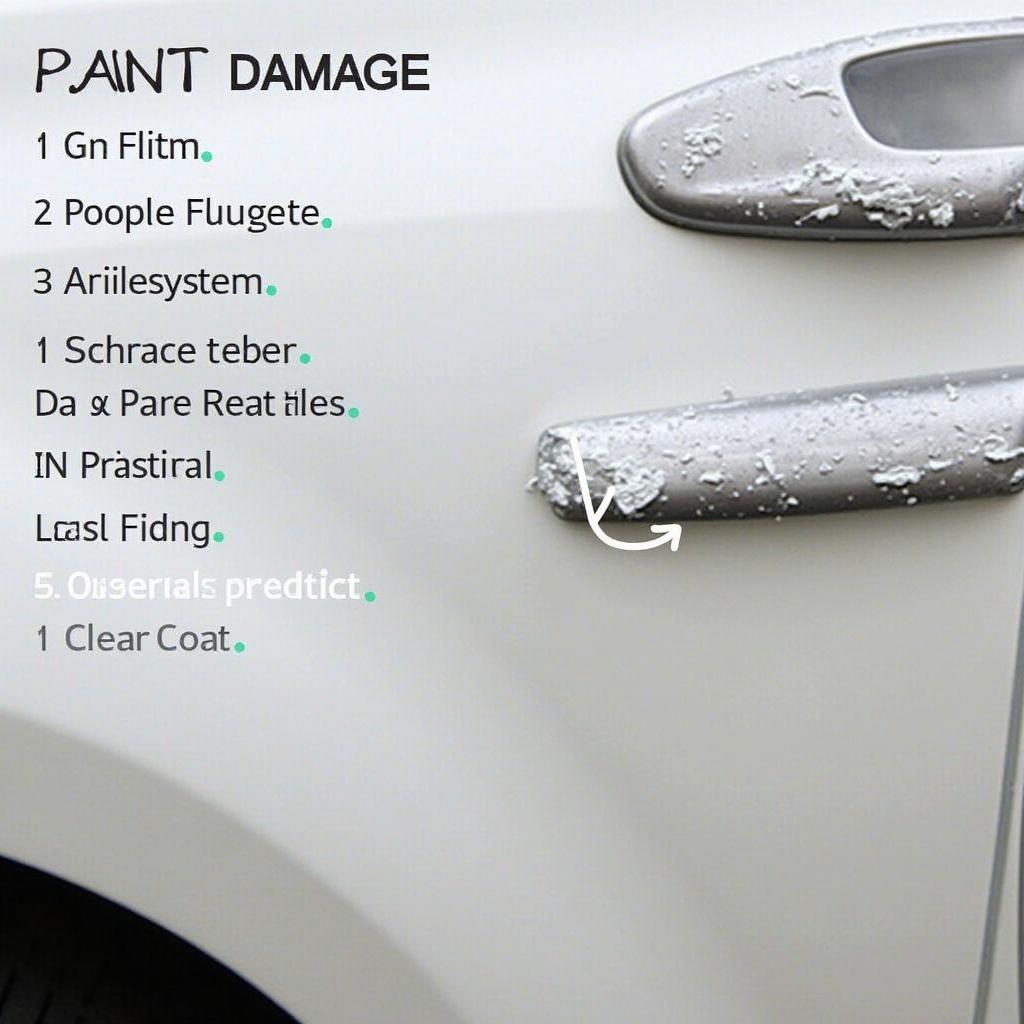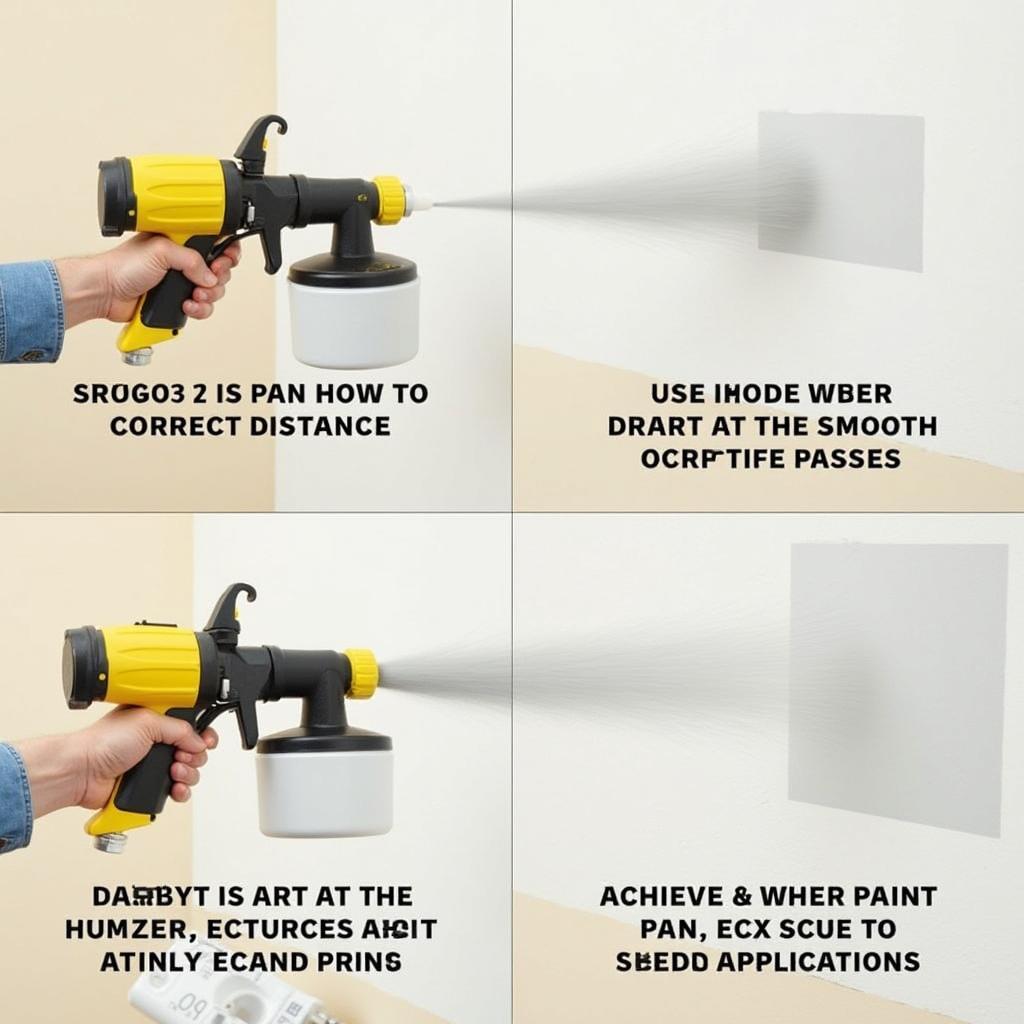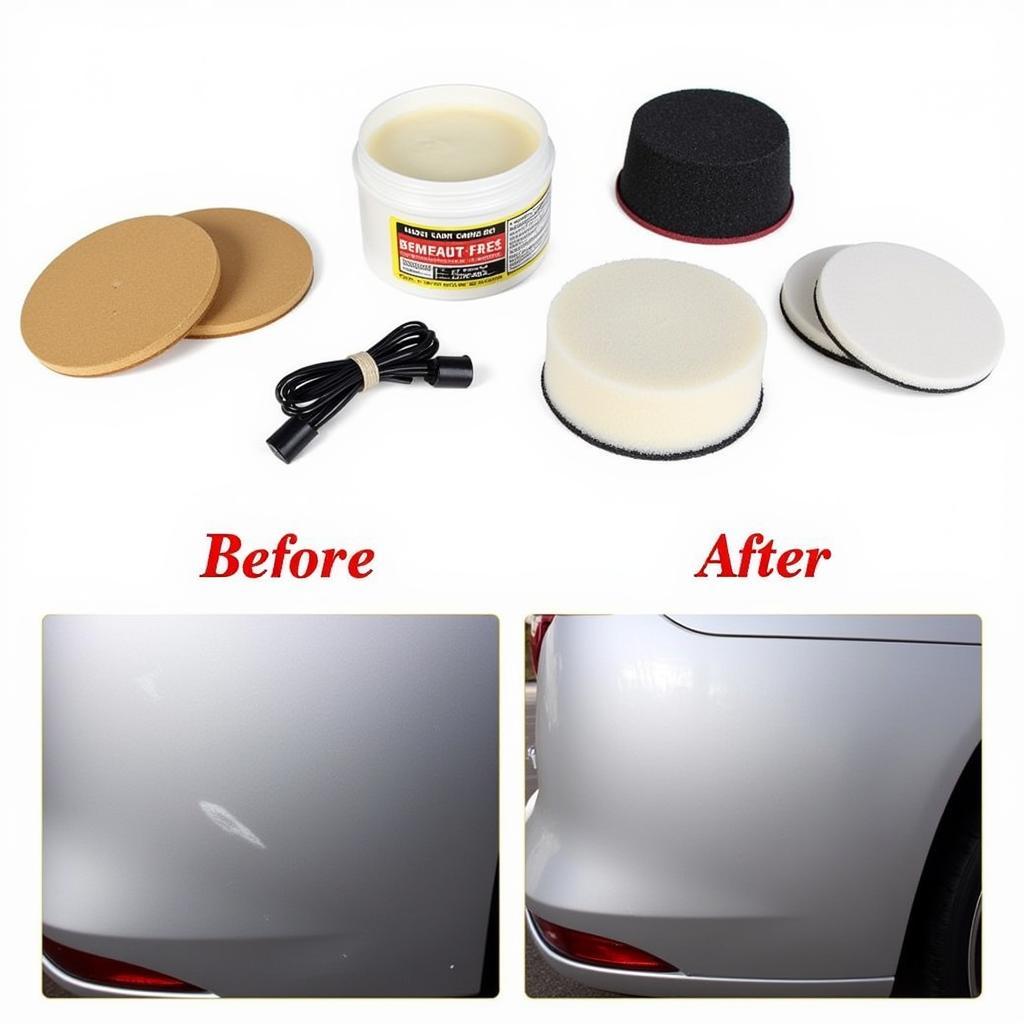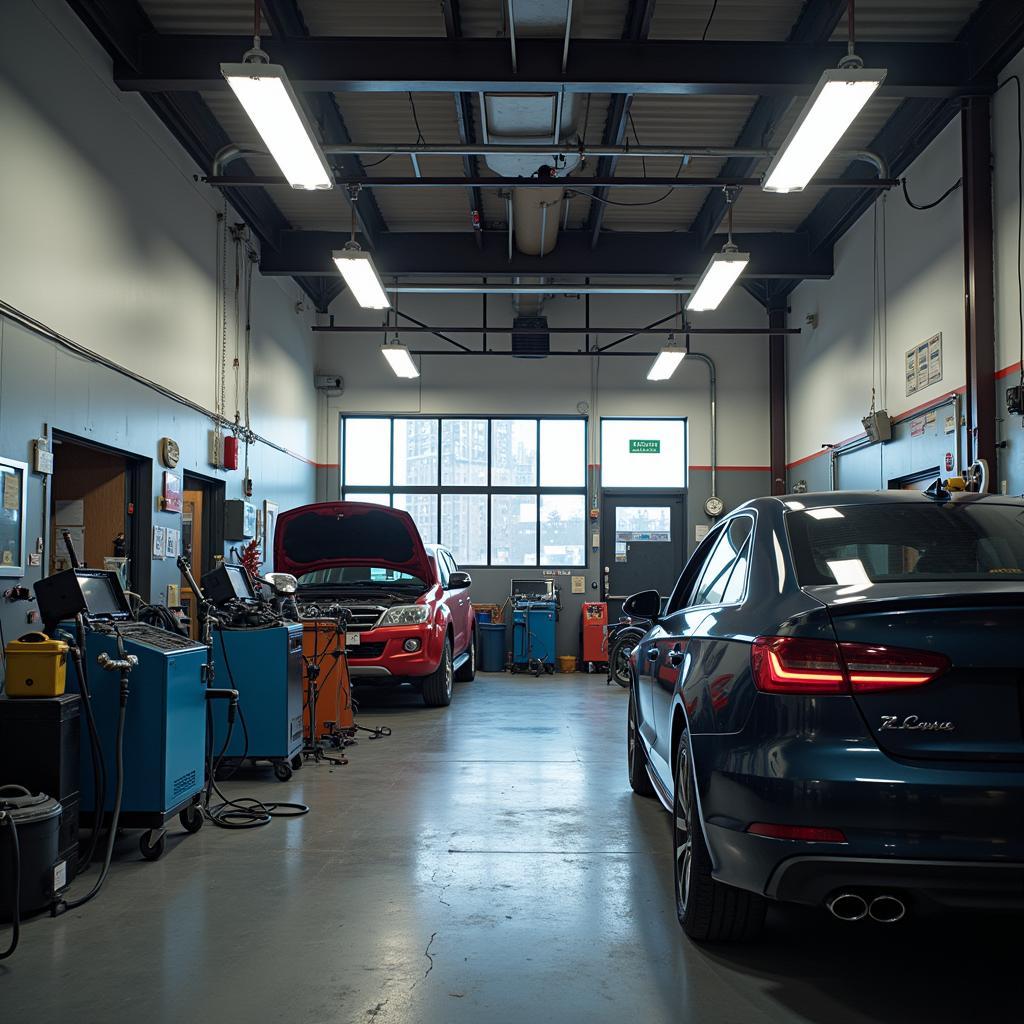
Types of Car Paint Damage
Car bodywork paint repairs can seem daunting, especially with tools like the Stanley Comman paint sprayer. But achieving professional-looking results is possible with the right knowledge and approach. This guide explores the intricacies of car paint repair, from understanding common issues to mastering techniques for a flawless finish using tools like the Stanley Comman.
Identifying Common Car Paint Problems
Before diving into repairs, it’s crucial to identify the type of damage your car’s paint has sustained.
- Scratches: These range from light, superficial marks to deep grooves exposing the metal underneath.
- Chips: Small, localized areas where paint has chipped off, often caused by rocks or road debris.
- Scuffs: Similar to scratches but typically less deep, often resulting from minor scrapes or abrasions.
- Fading and Oxidation: Prolonged exposure to sunlight can cause paint to lose its vibrancy and develop a chalky appearance.
- Clear Coat Peeling: The clear coat acts as a protective layer, and its peeling signals underlying paint damage.
 Types of Car Paint Damage
Types of Car Paint Damage
The Role of the Stanley Comman in Paint Repair
The Stanley Comman paint sprayer has become a favorite among DIY enthusiasts and professionals for its ease of use and consistent performance.
- Even Application: The Stanley Comman ensures a smooth and consistent paint application, minimizing the risk of drips or uneven coverage.
- Versatility: This tool handles various paint types, from primers to clear coats, making it a versatile solution for diverse repair needs.
- Control: The adjustable nozzle allows for precise control over paint flow and spray pattern, essential for achieving a professional finish.
Prepping Your Car for Paint Repair
Thorough preparation is key to a successful car paint repair.
- Clean the Surface: Wash the car thoroughly to remove dirt, grime, and contaminants. Use a degreaser for areas with stubborn grease or wax buildup.
- Sanding: Use progressively finer grit sandpaper to smooth out imperfections. Start with a coarser grit (e.g., 220) and work your way down to a finer grit (e.g., 600) for a smooth base.
- Masking: Use painter’s tape and masking paper to protect areas you don’t want to paint, ensuring clean, defined lines.
 Car Prepared for Paint Repair
Car Prepared for Paint Repair
Applying Paint with the Stanley Comman
Follow these steps for a professional-looking paint job using your Stanley Comman:
- Thin the Paint: Refer to the paint manufacturer’s instructions for the correct thinning ratio. Using a paint thinner compatible with your paint type is crucial.
- Test Spray: Before spraying your car, adjust the nozzle and practice on a piece of cardboard to achieve the desired spray pattern and flow.
- Apply Primer (If Needed): For bare metal areas, apply an even coat of primer using smooth, overlapping passes. Allow it to dry completely before proceeding.
- Apply Base Coat: Apply thin, even coats of base coat, allowing each coat to dry according to the paint instructions. Multiple thin coats result in a better finish than one thick coat.
- Apply Clear Coat: Once the base coat is dry, apply the clear coat using the same technique as the base coat. The clear coat provides UV protection and enhances the shine.
 Applying Paint with a Stanley Comman Paint Sprayer
Applying Paint with a Stanley Comman Paint Sprayer
Achieving a Flawless Finish
- Wet Sanding: Once the clear coat is fully cured (typically 24-48 hours), wet sanding with ultra-fine grit sandpaper (e.g., 1000-2000) can further enhance the smoothness and gloss.
- Polishing: After wet sanding, use a polishing compound and a buffer to remove any sanding marks and bring out a brilliant shine.
“Using a high-quality paint sprayer like the Stanley Comman, combined with proper preparation and technique, can significantly elevate the quality of your DIY car paint repairs,” says Mike Thompson, an automotive paint specialist with over 20 years of experience. “Don’t be afraid to take your time, practice your technique, and don’t hesitate to consult online resources or professionals for guidance.”
Car bodywork paint repairs, while demanding patience and precision, are attainable with the right tools and techniques. Remember, a meticulous approach using a quality tool like the Stanley Comman can yield professional-looking results, saving you money and giving you the satisfaction of a job well done.




